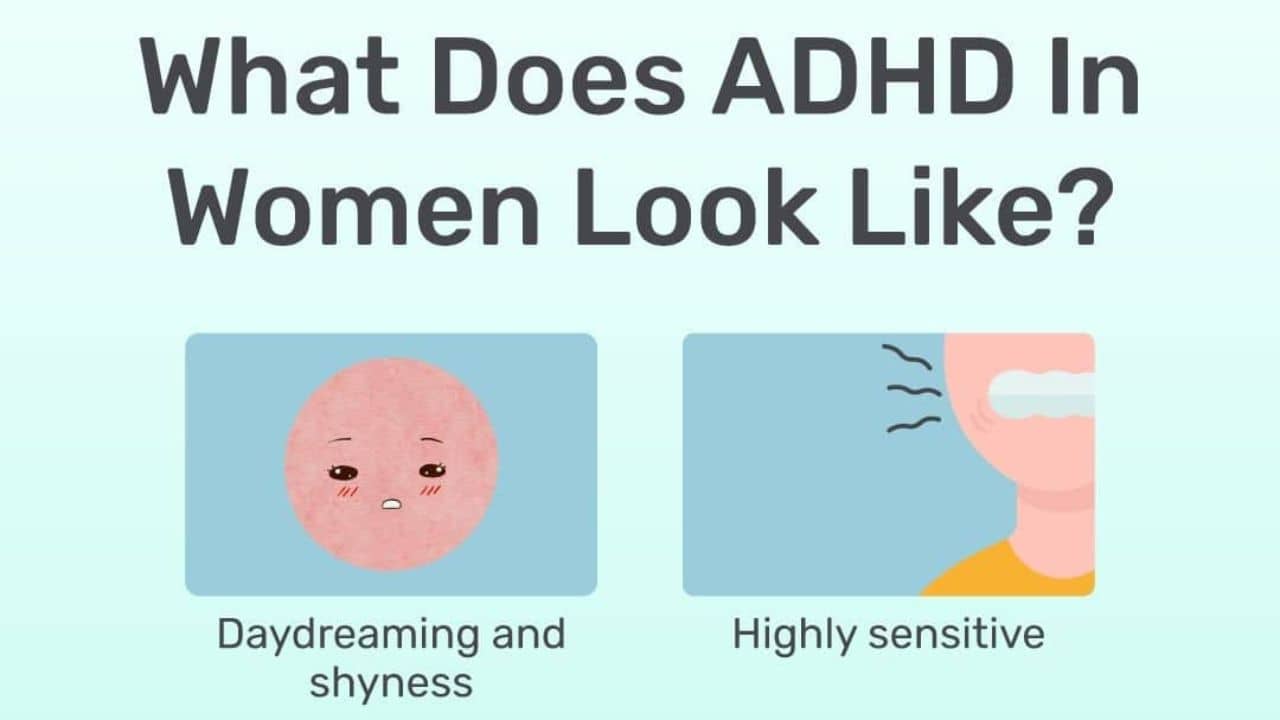Attention Deficit Hyperactivity Disorder (ADHD) is a neurodevelopmental condition that affects millions of children and adults worldwide. Characterized by a range of symptoms that can impact daily life, ADHD requires careful understanding and management. This article delves into the symptoms of ADHD, covering all related aspects to provide a thorough and SEO-optimized overview.
What is ADHD?
ADHD is a chronic condition that includes attention difficulty, hyperactivity, and impulsiveness. While commonly diagnosed in children, ADHD can persist into adulthood, affecting various aspects of life, including academic, professional, and social settings.
What are the common Symptoms of ADHD
ADHD symptoms are broadly categorized into three types: Inattentive, Hyperactive-Impulsive, and Combined.

1. Inattentive Symptoms
Individuals with predominantly inattentive ADHD often exhibit symptoms such as:
- Difficulty Sustaining Attention: Struggling to maintain focus on tasks or activities.
- Careless Mistakes: Making frequent errors in schoolwork or other activities due to lack of attention to detail.
- Disorganization: Finding it hard to keep tasks and activities organized.
- Forgetfulness: Often forgetting daily activities, appointments, or chores.
- Avoidance of Tasks Requiring Sustained Effort: Avoiding or showing reluctance towards tasks that require prolonged mental effort, such as homework or lengthy projects.
- Easily Distracted: Being easily distracted by unrelated stimuli, losing track of the task at hand.
- Poor Time Management: Difficulty in managing time effectively, often resulting in missed deadlines or appointments.
2. Hyperactive-Impulsive Symptoms
Individuals with predominantly hyperactive-impulsive ADHD may exhibit:
- Excessive Fidgeting: Constantly fidgeting or tapping hands or feet.
- Inability to Stay Seated: Difficulty remaining seated in situations where it is expected, such as in a classroom or office.
- Running or Climbing Inappropriately: Feeling restless and often running or climbing in inappropriate situations.
- Difficulty Playing Quietly: Finding it hard to engage in quiet leisure activities.
- Excessive Talking: Talking excessively, often without considering the appropriateness of the setting.
- Blurting Out Answers: Impulsively answering questions before they are fully asked.
- Difficulty Waiting Turn: Struggling to wait for their turn in conversations or activities.
- Interrupting Others: Frequently interrupting or intruding on others’ conversations or activities.
3. Combined Symptoms
Individuals with combined-type ADHD exhibit a mix of inattentive and hyperactive-impulsive symptoms. This is the most common presentation of ADHD.
ADHD Symptoms in Children
ADHD symptoms often become apparent in childhood, typically between the ages of 3 and 6. Common signs in children include:
- Trouble Staying Focused: Difficulty paying attention during schoolwork or play.
- Behavioral Issues: Frequent disruptions in the classroom or during group activities.
- Poor Academic Performance: Struggling to follow instructions and complete assignments.
- Social Challenges: Difficulty forming and maintaining friendships due to impulsive behaviors.

ADHD Symptoms in Adults
While symptoms may change with age, many adults continue to experience significant challenges related to ADHD. Adult symptoms include:
- Chronic Disorganization: Persistent issues with managing time, staying organized, and meeting deadlines.
- Relationship Difficulties: Struggling with social interactions and maintaining relationships due to impulsive or inattentive behaviors.
- Workplace Challenges: Difficulty focusing, completing tasks, and following through on projects at work.
- Emotional Dysregulation: Frequent mood swings, frustration, and low self-esteem.
ADHD Symptoms in Girls
Attention Deficit Hyperactivity Disorder (ADHD) affects both boys and girls, but its symptoms often manifest differently between the genders. Historically, ADHD has been more frequently diagnosed in boys, partly due to the more visible hyperactive behaviors they exhibit. In contrast, girls with ADHD may display subtler symptoms, leading to underdiagnosis or misdiagnosis. Understanding these gender-specific differences is crucial for timely and accurate identification and intervention.

Inattentive Symptoms in Girls
Girls with ADHD often exhibit more inattentive symptoms than hyperactive or impulsive behaviors. These symptoms can include:
- Daydreaming: Girls may appear to be in their own world, frequently lost in thought and disconnected from their surroundings.
- Difficulty Sustaining Attention: Struggling to focus on tasks, especially those that require prolonged mental effort, such as homework or classroom activities.
- Disorganization: Trouble keeping track of personal items, maintaining an organized workspace, or planning and completing tasks.
- Forgetfulness: Frequently forgetting to complete tasks, follow through on instructions, or remember daily routines.
- Easily Distracted: Easily sidetracked by external stimuli or irrelevant thoughts, leading to incomplete tasks and frequent shifts in focus.
- Poor Time Management: Difficulty estimating how long tasks will take, often resulting in procrastination or failure to meet deadlines.
Hyperactive-Impulsive Symptoms in Girls
While less common, some girls with ADHD do exhibit hyperactive and impulsive behaviors. These symptoms can include:
- Excessive Talking: Talking excessively, often interrupting others or dominating conversations.
- Restlessness: A constant need to move, fidget, or change positions, even in situations where it is inappropriate.
- Impulsivity: Acting without thinking, such as interrupting others, blurting out answers, or making hasty decisions.
- Emotional Dysregulation: Difficulty managing emotions, leading to frequent mood swings, outbursts, or heightened sensitivity.
Social and Emotional Impact
ADHD can significantly affect a girl’s social and emotional well-being. Common challenges include:
- Peer Relationships: Difficulty making and maintaining friendships due to inattentiveness, impulsivity, or social awkwardness.
- Self-Esteem: Lower self-esteem resulting from academic struggles, social rejection, or constant criticism.
- Anxiety and Depression: Higher risk of developing anxiety, depression, or other emotional disorders due to the ongoing challenges and frustrations associated with ADHD.
Diagnosing ADHD in Girls
Diagnosing ADHD in girls can be challenging due to the subtler presentation of symptoms. Steps to improve diagnosis include:

- Comprehensive Evaluation: A thorough assessment by a healthcare professional, including clinical interviews, behavioral questionnaires, and input from parents and teachers.
- Observation in Multiple Settings: Evaluating behaviors in various environments, such as home, school, and social settings, to get a complete picture of the girl’s challenges.
- Awareness of Gender Differences: Educating parents, teachers, and healthcare providers about the unique presentation of ADHD in girls to promote early recognition and intervention.
Diagnosing ADHD
Diagnosing ADHD involves a comprehensive evaluation by a healthcare professional, typically including:
- Clinical Interview: Detailed discussion about symptoms, medical history, and behavior patterns.
- Behavioral Questionnaires: Standardized questionnaires filled out by the individual, parents, or teachers to assess symptom severity.
- Medical Examination: Ruling out other medical conditions that may mimic ADHD symptoms.
Treatment and Management of ADHD Symptoms
Effective management of ADHD symptoms often includes a combination of treatments:

- Medication: Stimulant and non-stimulant medications can help regulate brain function and improve focus and impulse control.
- Behavioral Therapy: Techniques such as cognitive-behavioral therapy (CBT) can help develop coping strategies and improve organizational skills.
- Lifestyle Adjustments: Regular exercise, a balanced diet, and adequate sleep can support overall well-being and symptom management.
- Support Systems: Educational support, workplace accommodations, and family support are crucial in managing ADHD symptoms effectively.
Myths and Misconceptions about ADHD Symptoms
There are several myths about ADHD that contribute to misunderstandings and stigma:

- ADHD is Not Real: ADHD is a well-documented medical condition recognized by major health organizations.
- Only Hyperactive Children Have ADHD: ADHD can present without hyperactivity, known as inattentive ADHD.
- ADHD is Caused by Poor Parenting: ADHD has genetic and neurological bases and is not caused by parenting styles.
Conclusion
Understanding the symptoms of ADHD is crucial for early identification and effective management. ADHD can significantly impact various aspects of life, but with proper treatment and support, individuals can lead fulfilling lives. If you or a loved one exhibits symptoms of ADHD, seeking a professional evaluation is the first step towards managing this condition effectively.
By recognizing and addressing ADHD symptoms, we can reduce stigma, provide better support, and improve the quality of life for those affected by this condition. For more information and resources, consult healthcare professionals or support groups dedicated to ADHD.





